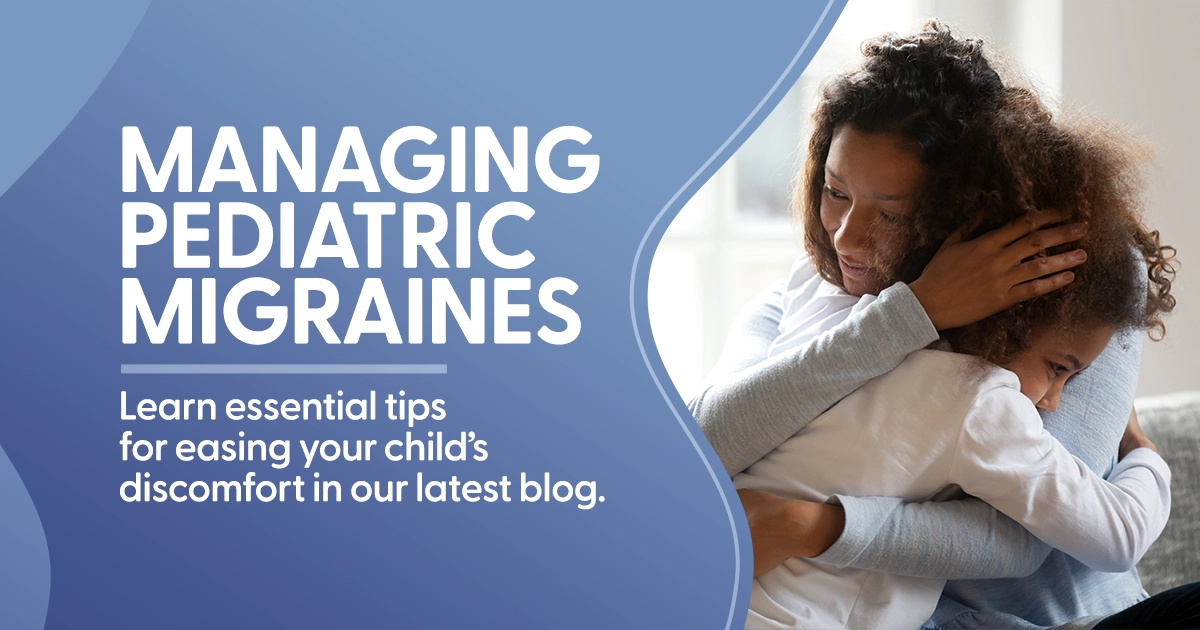Migraines can affect children just as they affect adults, often causing significant discomfort and disrupting daily life. Pediatric migraines are a type of headache that can occur in children as young as infancy and typically involve intense, throbbing pain. Understanding the symptoms and triggers of migraines in children is key to providing relief and support.
What Are Pediatric Migraines?
Pediatric migraines present with many of the same symptoms as adult migraines but may have some unique characteristics in children. A migraine is more than just a headache; it often includes:
1. Throbbing Pain: Children might experience throbbing or pulsing pain on one or both sides of the head.
2. Sensitivity to Light and Sound: Migraines can cause heightened sensitivity to light, sound, and even smells.
3. Nausea and Vomiting: Digestive symptoms like nausea, vomiting, and stomach pain are common in pediatric migraines.
4. Fatigue: Children may feel extremely tired before, during, or after a migraine episode.
5. Aura: Some children experience an aura—visual disturbances such as flashes of light or blind spots—before the migraine starts.
Migraines in children can last anywhere from a few hours to several days, depending on the severity.

Common Triggers of Pediatric Migraines
Understanding what triggers migraines in your child can help in managing and preventing future episodes. Some of the most common triggers include:
1. Stress: Emotional stress from school, social interactions, or family life can trigger migraines.
2. Diet: Certain foods, such as chocolate, processed meats, and foods containing additives like MSG, may lead to migraines.
3. Sleep Disruptions: Lack of sleep or irregular sleep patterns can be a significant factor.
4. Dehydration: Insufficient hydration can cause headaches and trigger migraine episodes.
5. Environmental Factors: Bright lights, strong smells, or sudden changes in weather may initiate a migraine.
Tips for Managing Pediatric Migraines
Managing migraines may require a combination of lifestyle adjustments, home remedies, and medical interventions. Here are some tips to help relieve and prevent migraines in children:
1. Maintain a Consistent Schedule: Regular sleep and meal schedules can help prevent migraines. Try to help your child go to bed and wake up at the same time every day.
2. Encourage Hydration: Ensure your child drinks plenty of water throughout the day to avoid dehydration, a common trigger.
3. Healthy Diet: Limit foods that may trigger migraines and provide a balanced diet rich in fruits, vegetables, and whole grains.
4. Stress Management: Help your child manage stress with relaxation techniques such as deep breathing exercises, yoga, or mindfulness.
5. Create a Calm Environment: During a migraine episode, reduce sensory input by dimming lights and minimizing noise.
6. Consult a Doctor: If your child’s migraines are frequent or severe, speak to a healthcare provider about possible treatments, including medications or therapies.

Pediatric migraines can be a challenging condition for both children and their families, but with the right tools and strategies, managing them becomes more achievable. Understanding the triggers and early signs of migraines, combined with healthy lifestyle habits, can help reduce their frequency and severity.
If your child is struggling with pediatric migraines, consider participating in clinical research to explore potential new treatments. Check out our enrolling studies at Brainstorm Research to learn more about your child’s migraines.


